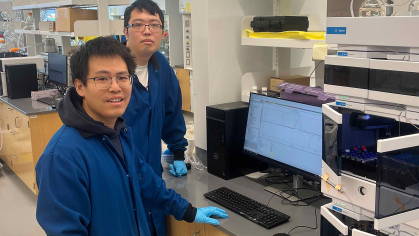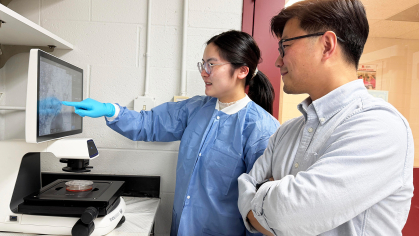Researchers Map Where Solar Energy Delivers the Biggest Climate Payoff

Using advanced computational modeling, a Rutgers professor, in collaboration with researchers from the Harvard T.H. Chan School of Public Health and Stony Brook University, reveal both the immediate and delayed climate benefits of solar power
Increasing solar power generation in the United States by 15% could lead to an annual reduction of 8.54 million metric tons of carbon dioxide emissions, according to researchers at Rutgers, the Harvard T.H. Chan School of Public Health and Stony Brook University.
The study, published in Science Advances, found that the climate benefits of solar power differ markedly throughout U.S. regions, pinpointing where clean energy investments return the greatest climate dividends.
In 2023, 60% of U.S. electricity generation relied on fossil fuels, while 3.9% came from solar, according to the U.S. Energy Information Administration. Because fossil fuel-generated electricity is a leading source of carbon dioxide, or CO2, and harmful air pollutants such as fine particulate matter, expanding solar could not only mitigate CO2 but help reduce illness, hospitalizations and premature deaths linked to air pollution exposure.
From a computer science perspective, this study demonstrates the power of harnessing large-scale, high-resolution energy data to generate actionable insights.
Arpita Biswas
Assistant Professor, Department of Computer Science, Rutgers School of Arts and Sciences
Researchers examined five years of hourly electricity generation, demand and emissions data from the Energy Information Administration starting July 1, 2018. They focused on the 13 geographic regions in the United States.
With this dataset, the researchers constructed a statistical model to explore how increases in hourly solar energy generation would affect CO2 emissions within a given region and in its neighboring regions.
The study quantified both immediate and delayed emissions reductions resulting from added solar generation. For example, the researchers found that in California, a 15% increase in solar power at noon was associated with a reduction of 147.18 metric tons of CO2 in the region in the first hour and 16.08 metric tons eight hours later.
“It was rewarding to see how advanced computational modeling can uncover not just the immediate, but also the delayed and far-reaching spillover effects of solar energy adoption,” said the lead author Arpita Biswas, an assistant professor with the Department of Computer Science at the Rutgers School of Arts and Sciences. “From a computer science perspective, this study demonstrates the power of harnessing large-scale, high-resolution energy data to generate actionable insights. For policymakers and investors, it offers a roadmap for targeting solar investments where emissions reductions are most impactful and where solar energy infrastructure can yield the highest returns.”
The researchers said their methods provide a more nuanced understanding of system-level impacts from solar expansion than previous studies, pinpointing where the benefits of increased solar energy adoption could best be realized. In some areas, such as California, Florida, the mid-Atlantic, the Midwest, Texas and the Southwest, small increases in solar were estimated to deliver large CO2 reductions, while in others, such as New England, the central U.S., and Tennessee, impacts were found to be minimal – even at much larger increases in solar generation.
In addition, the researchers said their study demonstrates the significant spillover effects solar adoption has on neighboring regions, highlighting the value of coordinated clean energy efforts. For example, a 15% increase in solar capacity in California was associated with a reduction of 913 and 1,942 metric tons of CO2 emissions per day in the northwest and southwest regions, respectively.
“I am very excited about this study because it harnesses the power of data science to offer insights for policymakers and stakeholders in achieving CO2 reduction targets through increased solar generation,” said Francesca Dominici, director of the Harvard Data Science Initiative and Clarence James Gamble Professor of Biostatistics, Population and Data Science and a corresponding author of the study.
Explore more of the ways Rutgers research is shaping the future.


